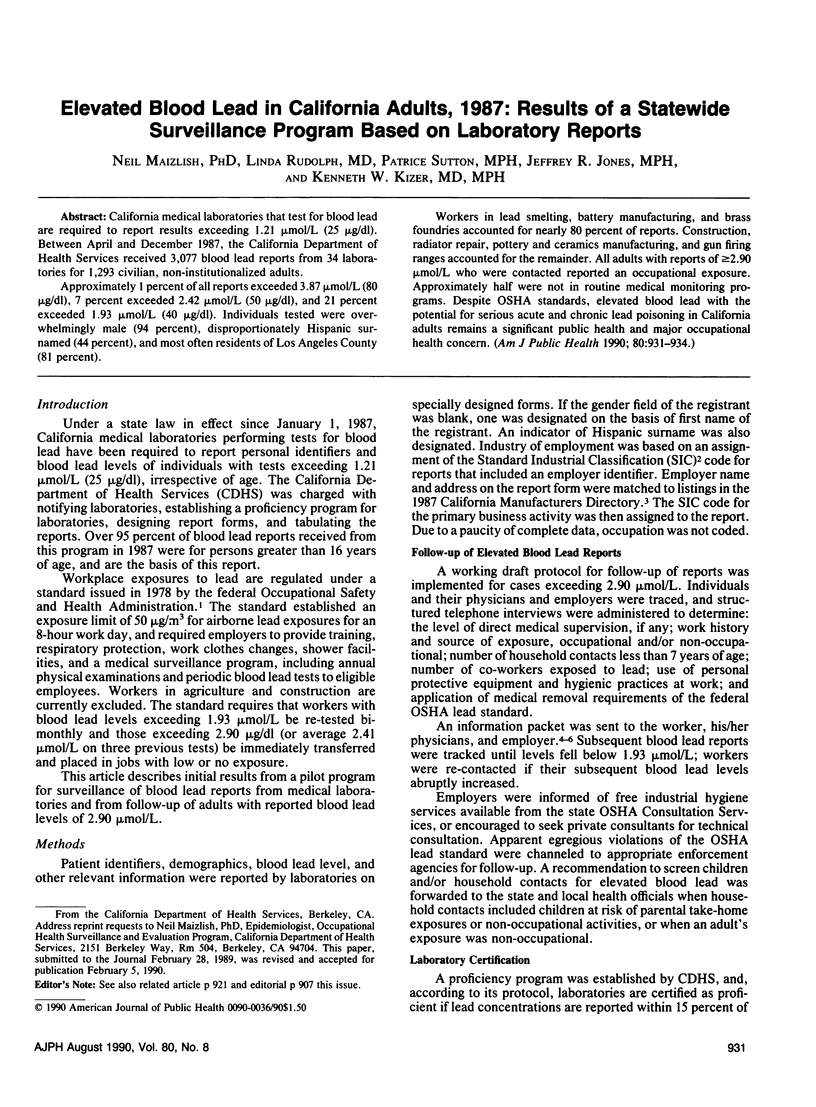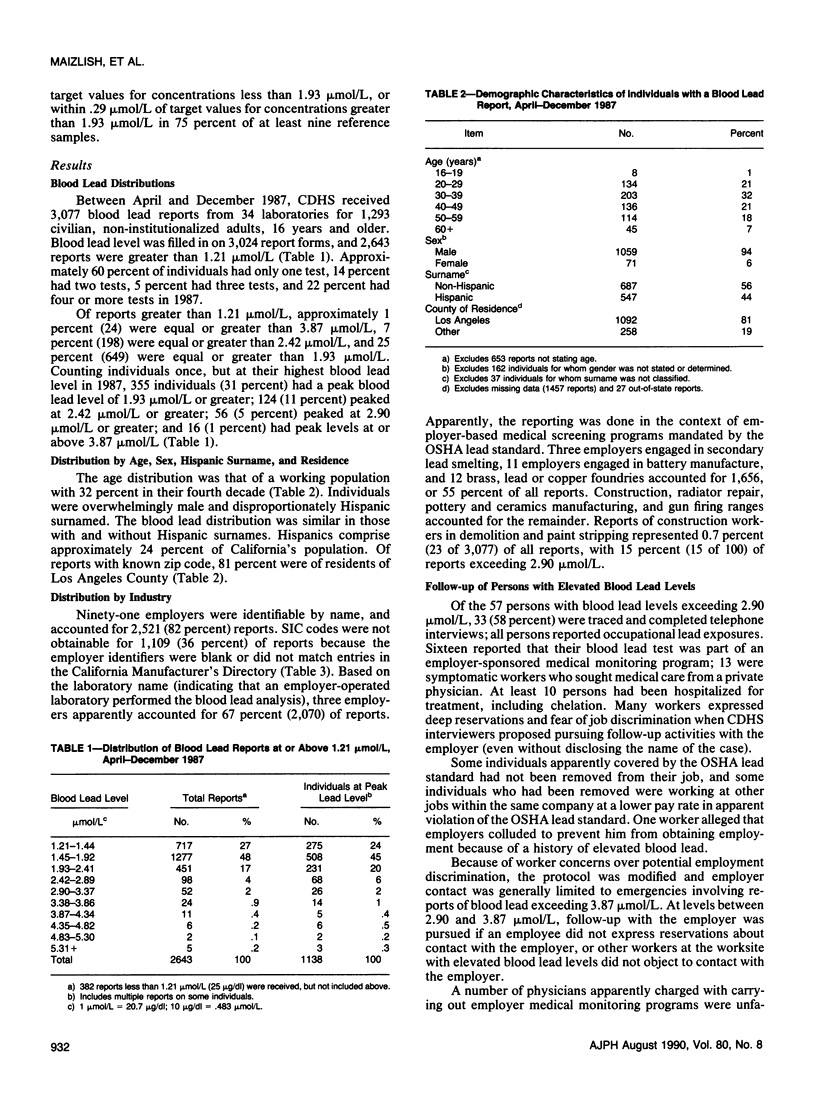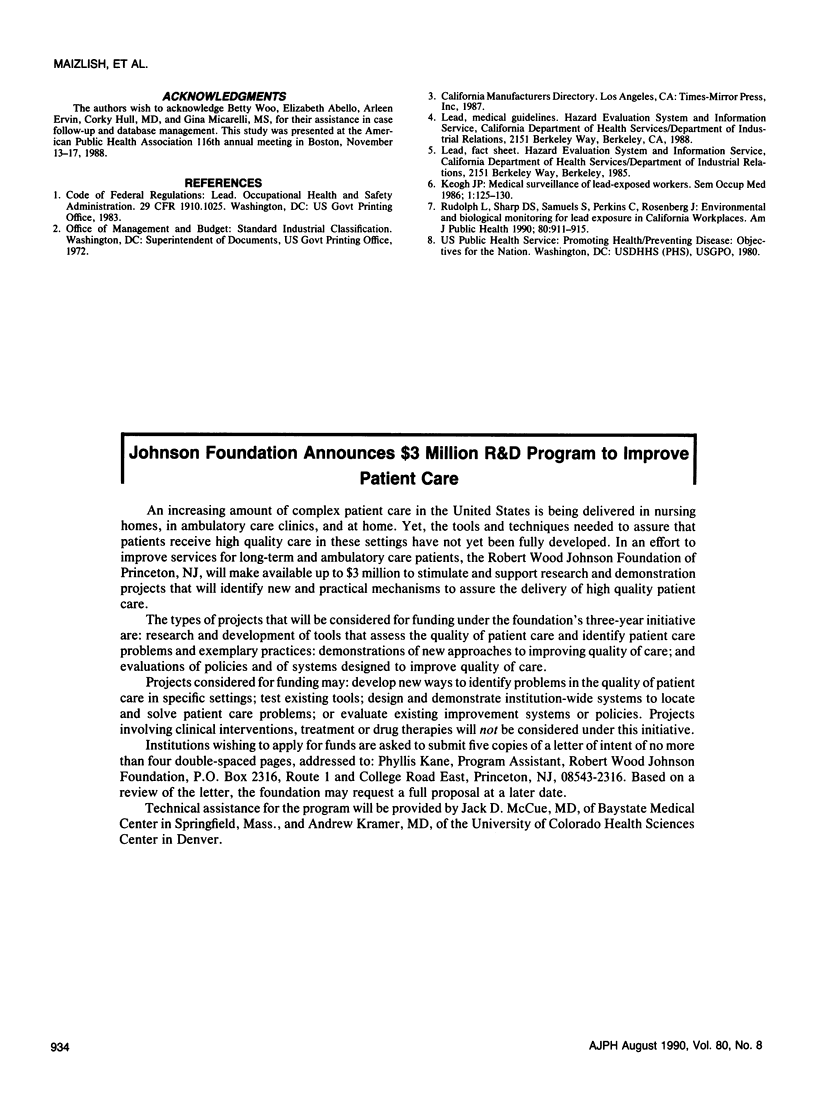Abstract
California medical laboratories that test for blood lead are required to report results exceeding 1.21 mumols/L (25 micrograms/dl). Between April and December 1987, the California Department of Health Services received 3,077 blood lead reports from 34 laboratories for 1,293 civilian, non-institutionalized adults. Approximately 1 percent of all reports exceeded 3.87 mumols/L (80 micrograms/dl), 7 percent exceeded 2.42 mumols/L (50 micrograms/dl), and 21 percent exceeded 1.93 mumols/L (40 micrograms/dl). Individuals tested were overwhelmingly male (94 percent), disproportionately Hispanic surnamed (44 percent), and most often residents of Los Angeles County (81 percent). Workers in lead smelting, battery manufacturing, and brass foundries accounted for nearly 80 percent of reports. Construction, radiator repair, pottery and ceramics manufacturing, and gun firing ranges accounted for the remainder. All adults with reports of greater than or equal to 2.90 mumols/L who were contacted reported on occupational exposure. Approximately half were not in routine medical monitoring programs. Despite OSHA standards, elevated blood lead with the potential for serious acute and chronic lead poisoning in California adults remains a significant public health and major occupational health concern.
Full text
PDF





